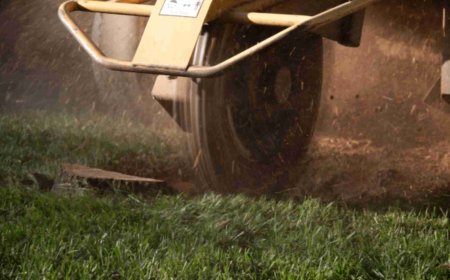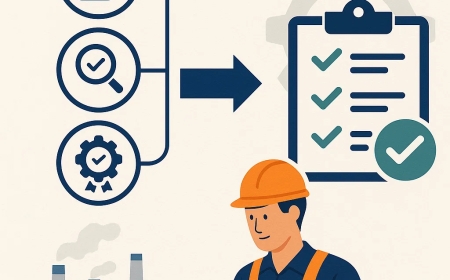10 Things You Didn’t Know About Comme des Garçons
Uncover 10 surprising facts about Comme des Garçons, from gender-defying design to guerrilla stores and why Gen Z is obsessed with the brand.

Comme des Garons is one of the most enigmatic, influential, and disruptive brands in fashion history. Even if you recognize the bug-eyed heart from the PLAY line or have seen Rei Kawakubos sculptural designs on a Met Gala red carpet, there's a lot more beneath the surface. From its quiet power in fashion to its radical design philosophy, Comme des Garons defies categorization.
Here are 10 surprising facts about Comme des Garons that reveal just how deep, strange, and innovative this brand really is.
1.The Name Means Like the BoysBut It Was Inspired by a French Song
Comme des Garons literally translates to like the boys in French. It sounds like a gender-bending fashion statementand in a way, it is. But the name actually comes from a line in a 1962 French pop song called Tous les garons et les filles by Franoise Hardy. The lyric Comme les garons et les filles de mon ge sparked Rei Kawakubos imagination when she was naming her brand in the late 1960s. The phrase ended up foreshadowing one of CDGs core themes: blurring and challenging gender norms.
2.Rei Kawakubo Never Studied Fashion Design
Unlike most fashion legends, Rei Kawakubo didnt come up through traditional design schools. She studied fine art and literature at Keio University in Tokyo and worked in advertising and textile styling before launching her own line. That outsider status has always defined her work. She approaches clothing more like a sculptor or installation artist than a tailor. Her lack of formal training helped her ignore the rules of fashionbecause she never learned them to begin with.
3.CDG's 1981 Paris Debut Was Nicknamed Hiroshima Chic (and Not in a Good Way)
When Comme des Garons debuted in Paris in 1981, it shocked the fashion world. The collection was stark, filled with asymmetrical black garments, frayed hems, and distressed fabrics. French critics were brutal. Some called it Hiroshima chic, a derogatory jab at the clothes' supposed apocalyptic look. Others accused the collection of being ugly, even offensive. But that backlash solidified CDGs status as a revolutionary force. What the critics missed was what Gen Z and modern audiences now embrace: CDG was rewriting what beauty in fashion could be.
4.The PLAY Line Wasnt Designed by Rei Kawakubo
Comme des Garons PLAY is by far the brands most recognizable sub-line, thanks to its Converse sneaker collabs and that iconic heart-with-eyes logo. But Kawakubo didnt design it. The PLAY line was developed by her husband and CDG CEO, Adrian Joffe, along with Polish artist Filip Pagowski, who drew the logo in a single, spontaneous session. Unlike the conceptual chaos of CDGs main runway collections, PLAY is meant to be more accessible, casual, and wearablewithout being basic.
5.CDG Was the First Major Japanese Brand to Show in Paris
CDG wasnt just pushing boundariesit was breaking through international barriers. In the early 80s, Rei Kawakubo and Yohji Yamamoto became the first Japanese designers to stage full shows in Paris. This move didnt just launch their careersit also reshaped the entire global fashion scene. Their presence challenged Eurocentric ideas of style and redefined what avant-garde could mean. Today, Japanese designers are a staple of global fashion, but it all started with CDG.
6.Rei Kawakubo Doesnt Believe in Fashion
Kawakubo has repeatedly said that she doesnt make fashionshe makes clothes. For her, the word fashion implies trend-following, consumerism, and surface-level aesthetics. Her work is closer to art, philosophy, or protest. Many of her collections are built around abstract themes like invisibility, absence, or breaking the silhouette. Her designs often intentionally reject wearability to make a point. Some have no armholes, some distort the human form, and some are more sculpture than garment. Shes more interested in ideas than outfits.
7.CDG Doesnt Advertise Traditionally
You wont find Comme des Garons commercials, flashy billboards, or influencer campaigns. In fact, CDG has famously minimal marketing. When they do create ads, they often appear in obscure publications or as cryptic visuals with no clothes in sight. The brands mystique is part of the appeal. It doesnt sell itselfit lets others come to it. This anti-commercial approach has ironically made CDG even more desirable, especially among fashion insiders and Gen Z consumers who value authenticity over hype.
8.There Are Over 15 Different CDG Sub-Lines
Comme des Garons is not just one brandits a fashion universe. Under Kawakubos direction, CDG has launched over 15 sub-labels and diffusion lines, each with its own creative direction. These include:
-
Comme des Garons Homme Plus Experimental menswear.
-
Comme des Garons SHIRT A more approachable take on classic tailoring.
-
CDG (2018) A streetwear-focused line created to reach younger audiences.
-
Noir Kei Ninomiya A sub-brand run by a former Kawakubo protg with a gothic, architectural style.
These lines let CDG explore everything from punk to corporate, streetwear to high art, without diluting the brand's identity.
9.CDG Runs Its Own Guerrilla Storesand Then Shuts Them Down
In the early 2000s, CDG pioneered the concept of the guerrilla store. These were temporary, underground boutiques set up in obscure, sometimes run-down locations around the worldplaces like Reykjavik, Warsaw, and Beirut. The stores werent heavily promoted and stayed open for only a year. The idea was to make fashion feel spontaneous and localnot institutional or globalized. In a time when most brands chase permanent retail spaces, CDG used ephemerality as a marketing tool. It was one of the earliest examples of pop-up culture before that became a retail trend.
10.Rei Kawakubo Designed the 2017 Met Gala Themeand Refused to Attend
In 2017, Rei Kawakubo became only the second living designer in history (after Yves Saint Laurent) to be honored with a solo exhibition at the Metropolitan Museum of Art's Costume Institute. The theme: Rei Kawakubo/Comme des Garons: Art of the In-Between. The show featured 140 of her most radical designs. But in true CDG fashion, Kawakubo didnt attend the gala herself. She sent designs but skipped the red carpet and the press. Her absence was a final statementreminding the world that her work speaks louder than celebrity or spectacle.
Final Thoughts
Comme des Garons isnt just a brandits a philosophy. It challenges what clothing is supposed to be, how it should look, who should wear it, and how it should make you feel. These 10 lesser-known facts only scratch the surface of CDGs complex universe, but they all point to one truth: Comme des Garons doesnt follow fashionit rewrites it.
And maybe thats why, decades after its controversial debut, its still leading the conversation.





























